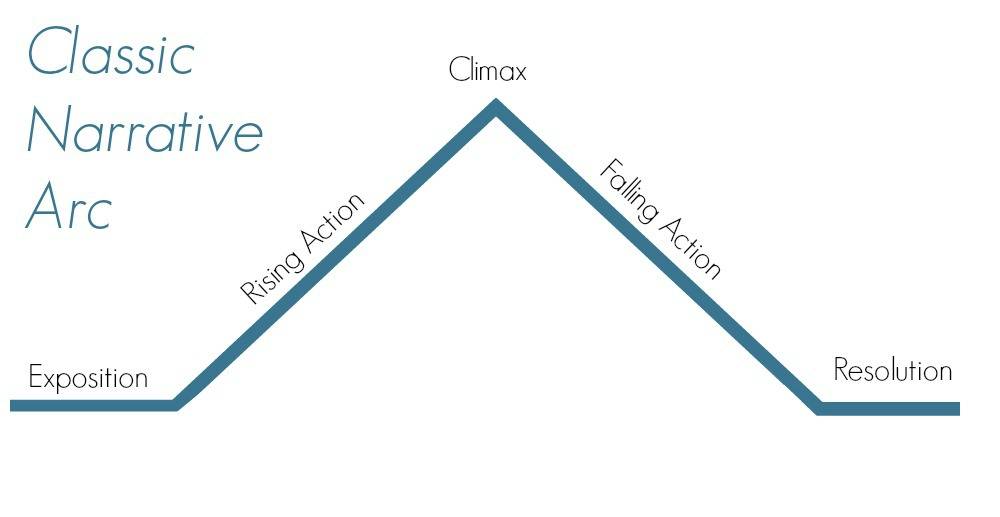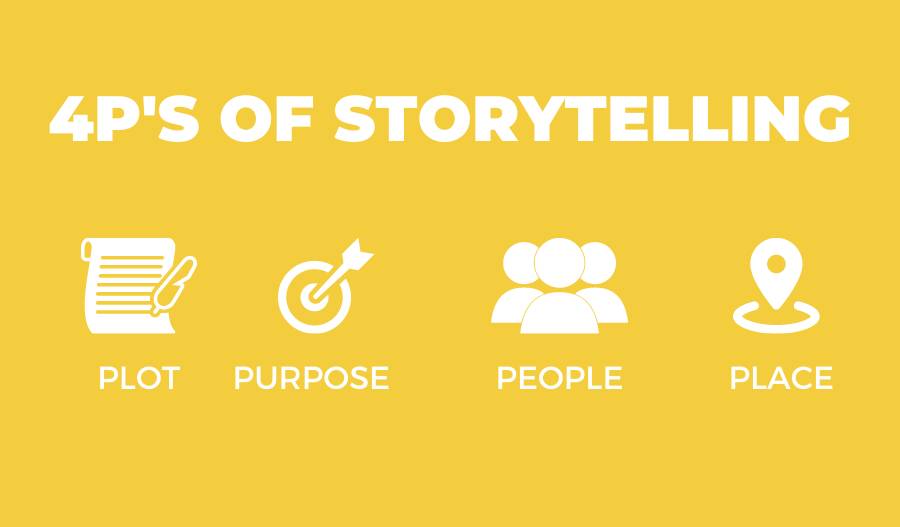
AI
As the famous saying goes, stories make the world go round. They help us build personal connections, based on empathy, trust, and compassion.
People process visuals 60,000 times better than text, which makes storytelling quite important these days.
This is why marketers invest more resources in telling compelling stories through video.
The answer is: you need to start with mastering the pillars of video storytelling. This is one of the key steps in creating content that will make your brand stand out.
Here are 8 key video storytelling techniques to help you create effective videos and connect with your audience on a more personal level.
Regardless of genre and the purpose, modern stories follow a similar progression. This progression is also known as the narrative arc.
The idea of the narrative arc is that every story has a calm beginning, middle, where the momentum and tension build-up, and an end.
This is a classic narrative structure we all are attuned to, which is also known as a hero’s journey. While alternative storytelling techniques may work too in some cases, this is the most effective story arc.
The classic narrative arc makes it easy for the viewers to follow along with the story, engages them, and keeps them watching till the end.

Marketers know that the very first step of every campaign is defining the target audience. No matter if you are a marketer, a business owner, or an independent creator, you need to know who your audience is.
Invest time to understand who your viewers are, their interests, and the problems they may encounter.
You can then use this knowledge to build your narrative around the “pain points” of your viewers.
This will encourage them to engage with your videos and watch them closely in hopes that your story will teach them how to solve their problems or change their perspective on certain things.
Before you start working on your video, one of the things you need to make sure of is that you have a firm understanding of the four P’s of storytelling: Plot, Purpose, People, Place.

Considering the 4P’s is a sure-fire way to improve your brand storytelling and craft a story that will create a connection between you and your audience.
One of the biggest reasons stories are so effective and resonate with us is because they convey emotions. To make your story appealing to the audience, when you start to develop your video idea, focus on the feelings you want to convey.
But how do you convey emotion through the video?
To do it, you need to focus on other critical elements of video storytelling. The colors, composition, plot, story development, and background music come together to communicate an emotion effectively.
Choose one emotion you want to evoke (be it sadness, warmth, happiness, hope), and share it for the whole duration of your video.
Here’s an example of brand video storytelling made by department store chain John Lewis as part of their Christmas campaign.
The aim of the video is to emphasize the importance of the holiday season, but at the same time, it also shares with us a beautifully sad story with a happy ending.
“Show, don’t tell” is an approach that can go a long way in video storytelling. Add to that the fact that over half of video content on social media is watched on mobile devices with the sound off, and it becomes clear why it is important to master the visual elements of your story.
Luckily, you don’t need words to tell your story. What you need are engaging visuals that emphasize the context of your message.
The viewers need to be able to understand what is happening in the video with the sound off.
Brands like Apple, GoPro, and Nike understand this well and make the most out of this trick. A wonderful example is the iPad Pro announcement video by Apple.
The video didn’t come with video captions or voiceover narration, but the brand managed to demonstrate the functionality of their new creation.
Another way to communicate with your audience can be the colors. The right colors have the power to make videos more appealing, create a mood, and share your message with the audience.
Once you understand the emotions you want to evoke, you can then understand the feelings each color evokes. This method is also known as color psychology and is used by some of the major brands around the world.
In movies or videos, the color sets the tone of the story, even if the actors don’t say a word. For example, the orange color evokes feelings of happiness, sociability, and youth.
So, if you want your brand to be perceived as youth-oriented, you may want to go with orange.

As our attention spans continue to shorten and the amount of information we receive grows, you need to compose videos so they would make it clear for the viewers where they need to focus.
Structure the video in a way that your audience knows where the key elements of your story are and concentrates on them.
To start, you can master the rule of thirds. It will give you an idea of how to frame your video to emphasize the key elements and add depth to your story.

You can then watch this video for some essential tips on video composition. It explains the importance of the aspect ratio, rule of the thirds, framing, and balance, and gives an idea on how to compose your videos so that they emphasize the key elements of your video.
If Instagram stories or Snapchat has taught us anything, it’s that you don’t need hours to tell a compelling story. So, when working on your video story, try to make it as short and clear as possible.
This is true, especially for the video stories you create for social media. According to the research by BuzzSumo, social media users prefer watching videos that are 2-4 minutes long. This can be applied to seasonal content like Christmas animated greetings which can be sweet while staying brief.
If you can say something in 10 seconds, don’t spend a minute on it.
Conclusion
Everyone has a story. Next time when you are planning to share yours through video, consider these storytelling basics.
Whether you are creating a storyboard, writing a script, or are making an animated video, they will give you fresh ideas, guide you through the process, and lead to creating a more compelling visual story for your audience. Engage your viewers with exciting video content—and you’ll steal the way to their hearts.
Article by: Renderforest Staff
Dive into our Forestblog of exclusive interviews, handy tutorials and interesting articles published every week!
Read all posts by Renderforest Staff

